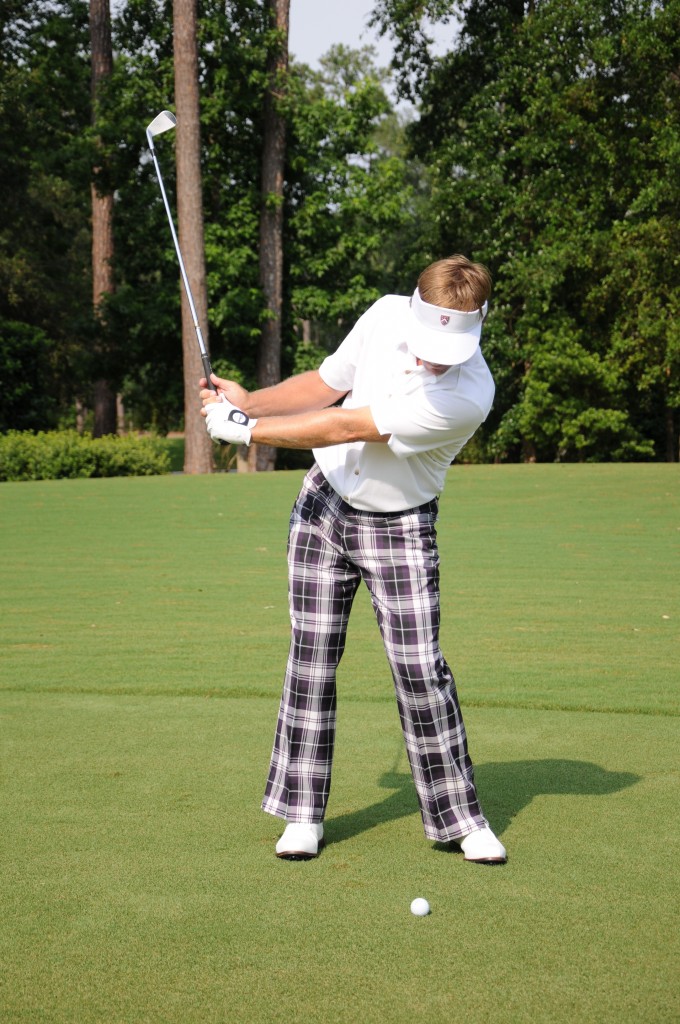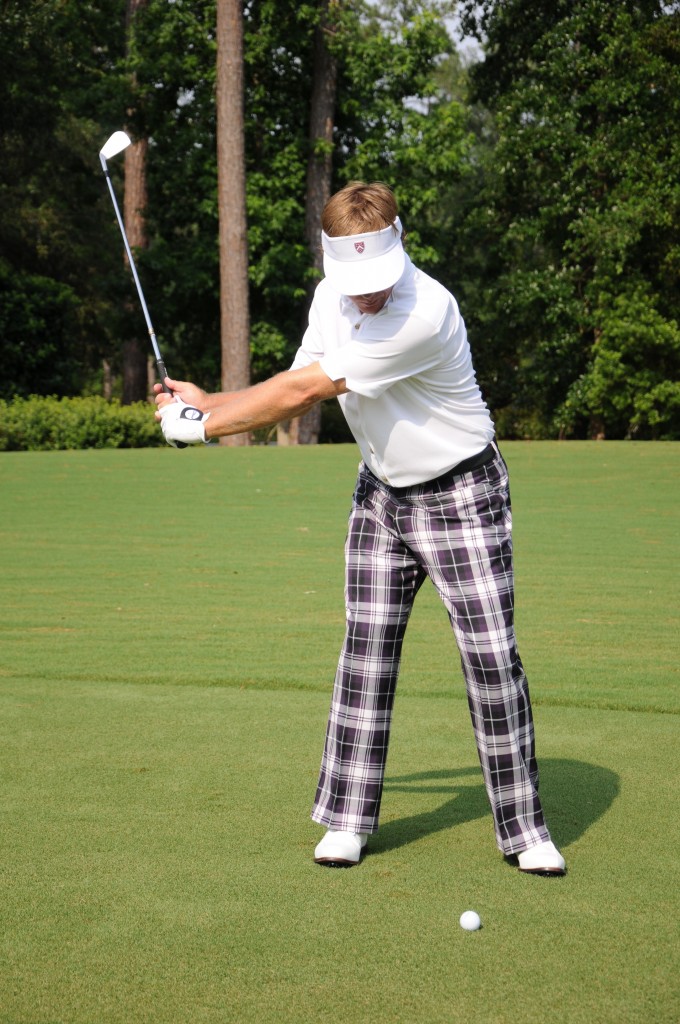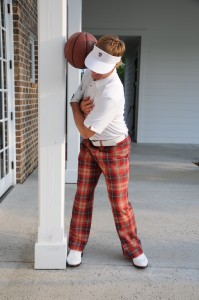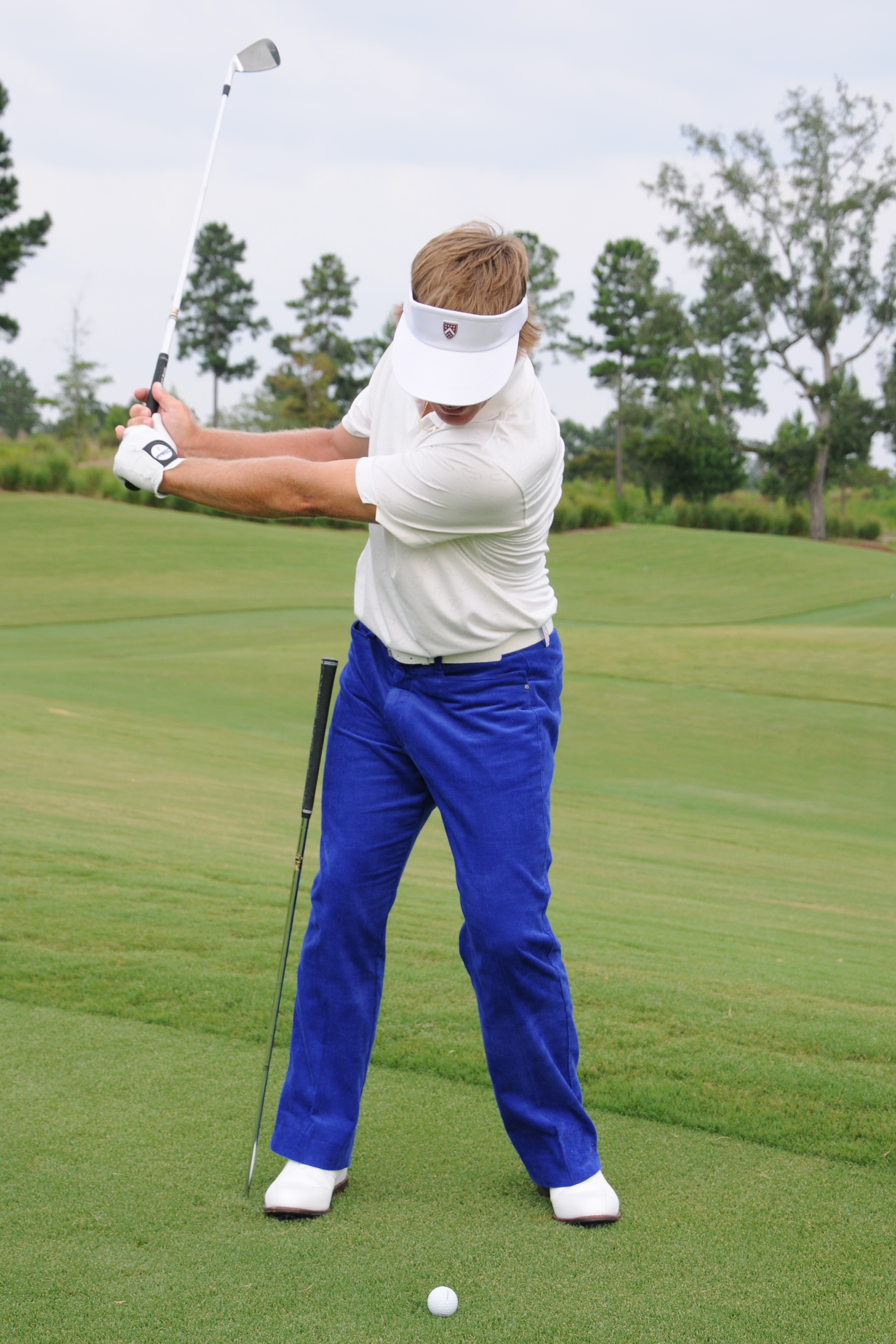Swaying in the Golf Swing
/In studying greatest golfers in the game, it became quite clear that there are many different ways to position the arms and club face throughout the swing, but almost every great player pivots the body to the top in a similar fashion. The great news is: the better the body position, the better the arms and club face position. I have often seen a frustrated student, striving for the perfect plane or look to their swing, suddenly have tremendous success simply by improving their body motion.
Here are examples of the two most common errors in pivoting the body and interestingly, both mistakes involve lateral movement:

- In this example, the golfer sways the hips away from the target in the backswing. In order to deliver the club to the ball correctly, there should be very little to no lateral motion in the backswing. In this case, the hips are going to need to drive very aggressively in the downswing, which most often leads to the upper body dropping back too far through the strike.

- In this example, the golfer moves the upper body laterally off the ball in an attempt to turn the shoulders or get behind the ball. The shoulders pivot on a flat plane, the arms lift in getting to the top, and as a result, there is very little chance this golfer will get back over the ball by the time impact occurs.
These two mistakes can be fairly easily eliminated by a: practicing the drills described below, and b: employing a good dose of patience and self-determination during the process.
It truly is amazing how, when the body works correctly, the arms and the club are given openings or slots to fall into. It’s even more amazing how, most often, those are the correct slots to deliver the club onto the back of the ball.
Drill 1:
- For this drill you will need a basketball/soccer ball. Assume your address position by placing the side of your back foot against a wall. Fold your arms across your chest, and position the ball between your head and the wall. Pivot your shoulders and hips, without losing the ball, paying attention to the feel you have at the top of the “backswing.” Hold for five seconds to assimilate this feel, and repeat. This drill will clearly provide you with the sense of a stationary upper body as you pivot into the backswing.

- A complementary drill to the basketball/soccer ball version: Place a shaft in the ground outside your back foot and run it up the outside of your leg at approximately 84 degrees. Be sure to hit shots off a low tee in order to maintain a consistent ball position so that you will not need to move the shaft after each shot. This drill will assist in reducing a lower body or hip sway.

Thanks for reading and I hope these ideas help you and your game!






